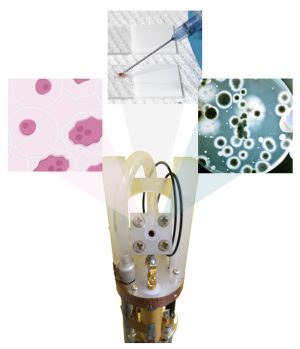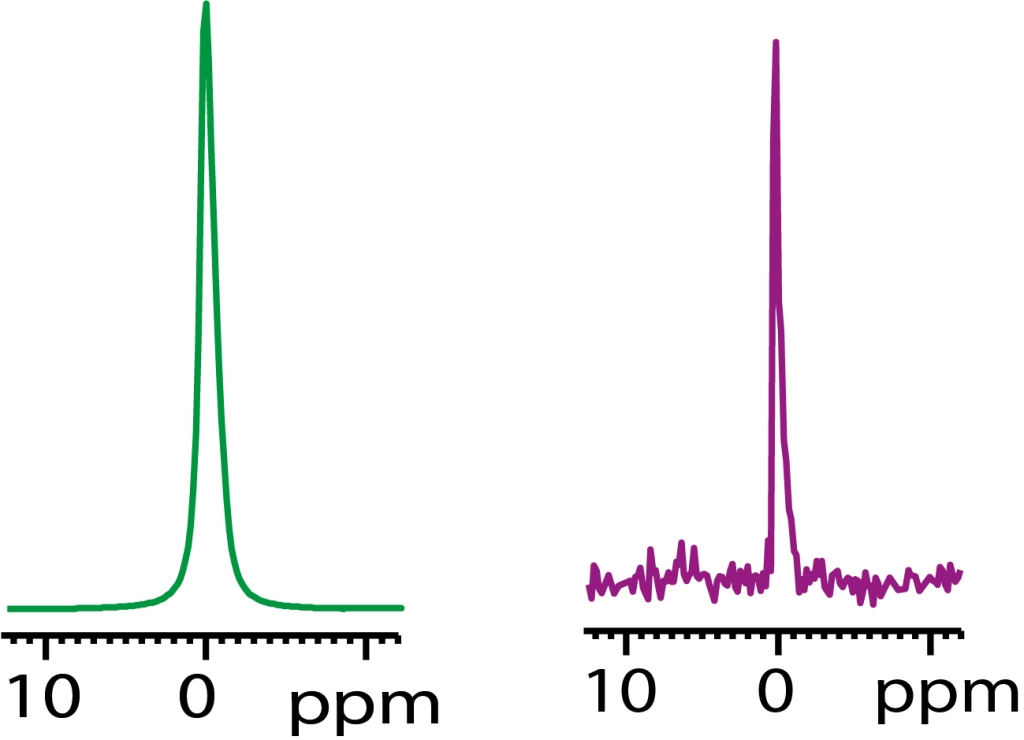HR μMAS
Le développement d’une sonde micro à angle magique (HRμMAS) capable de « haute résolution » se confronte à des défis sans précédent en raison de la difficulté d’obtenir un champ magnétique homogène dans un volume minuscule de moins de 500 nanolitres sans compromettre la sensibilité. Malgré cela, les résultats de la sonde HRμMAS ont ouvert de nouvelles possibilités dans le domaine de la métabolomique basée sur la RMN. Il est désormais possible de cribler des cellules et des organismes minuscules et limités, ce qui était auparavant considéré comme impossible. La biopsie à l’aiguille avec RMN peut également être réalisée à l’aide de HRμMAS, ce qui en fait un outil possible pour la recherche en sciences de la santé.
Contact : Alan Wong


Hyperpolarisation
Pour compenser le manque de sensibilité de la RMN, il est possible d’utiliser l’hyperpolarisation, dans laquelle la polarisation d’un système plus ordonné, comme les photons ou les électrons, est transférée aux spins nucléaires. Au LSDRM, deux méthodes d’hyperpolarisation sont en cours de développement : le pompage optique de gaz rares et le transfert de para-hydrogène.
Contact : Céline Boutin, Patrick Berthault, Gaspard Huber
Fluidique
Une autre façon d’augmenter la sensibilité de la résonance magnétique est de miniaturiser le système de détection et de le rapprocher de l’échantillon. De plus, la circulation de la solution à étudier offre plusieurs avantages, comme celui de contourner la relaxation longitudinale pour gagner en temps d’analyse. Ces développements en fluidique, facilités par l’impression 3D, ont été appliqués à la surveillance operando en temps réel de réactions chimiques et électrochimiques, ainsi qu’à l’étude des gaz en tant que sondes pour les matériaux poreux.
Contact : Patrick Berthault





